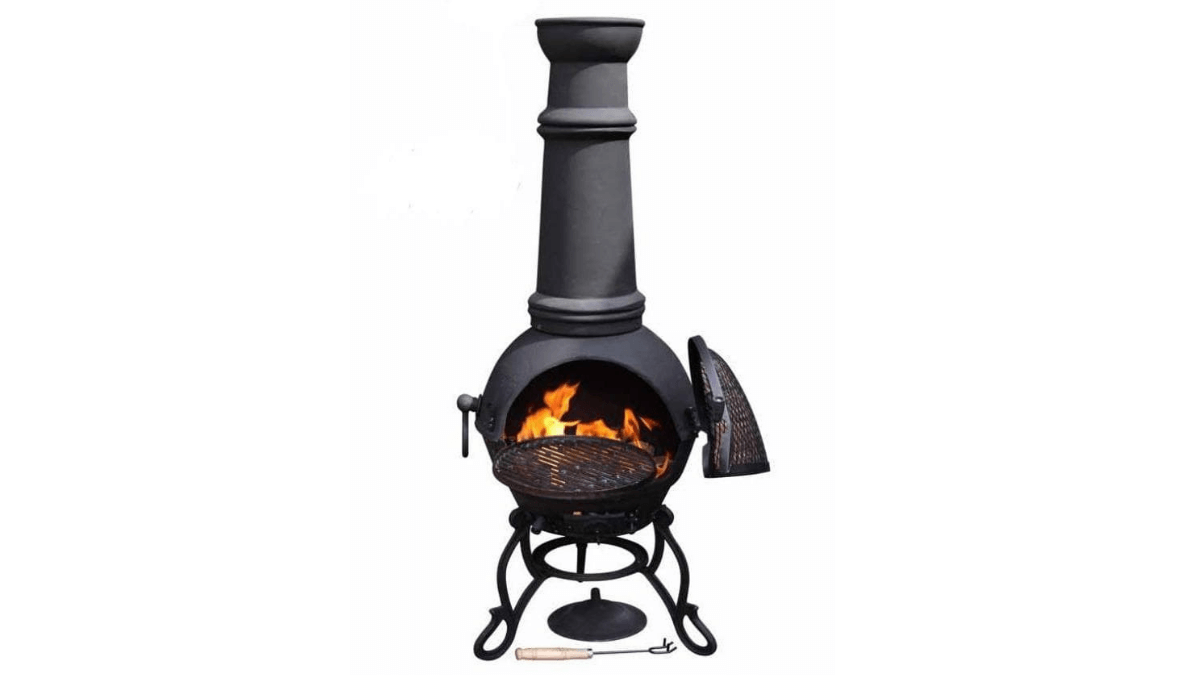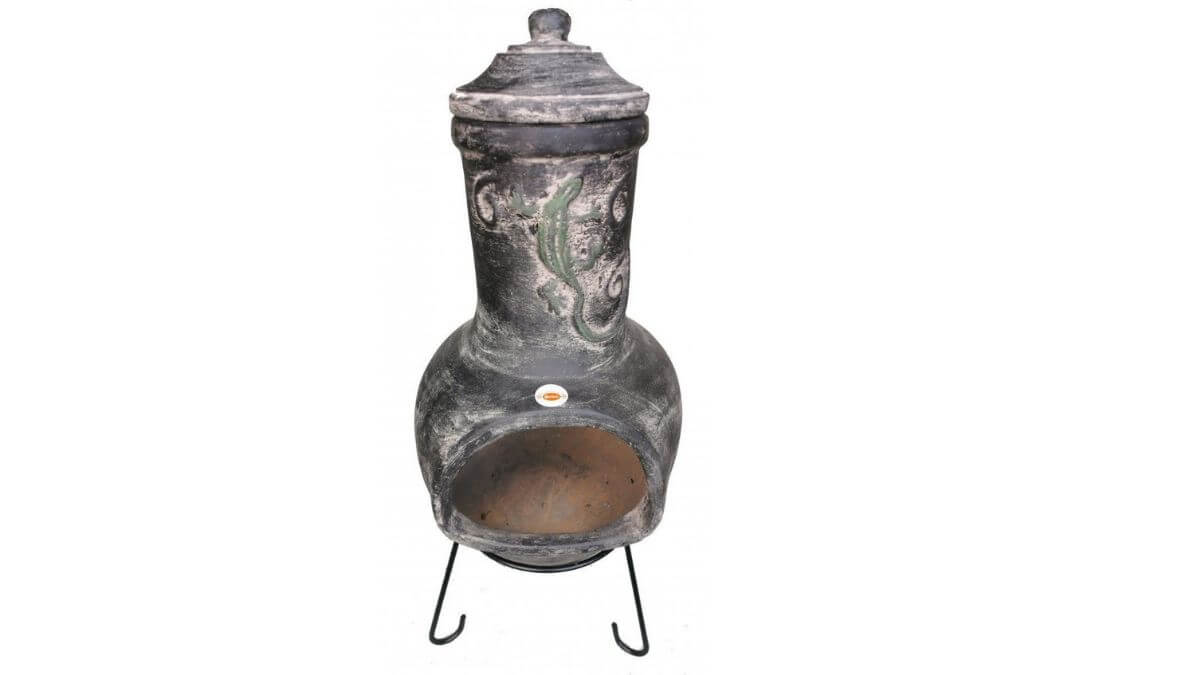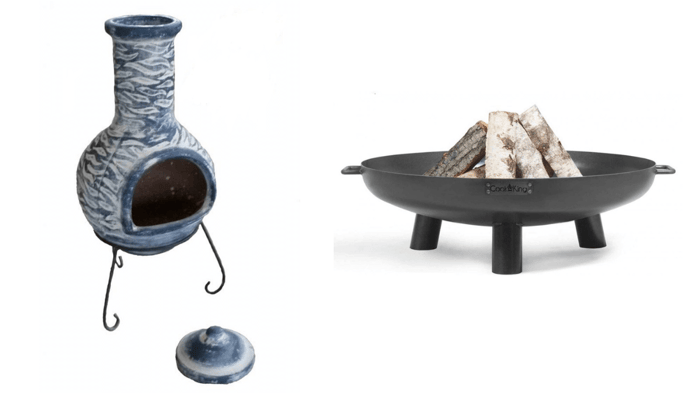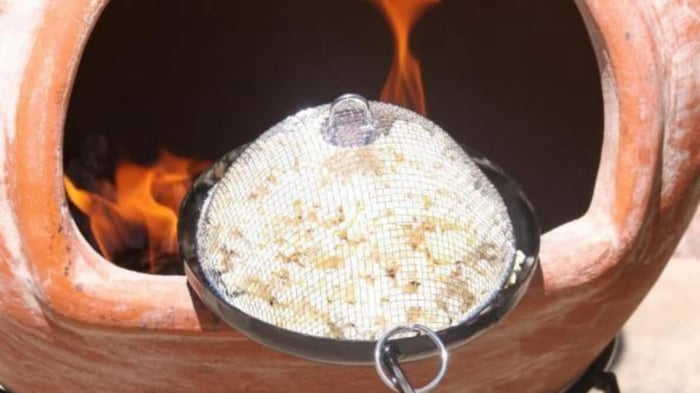A Guide to Chimenea
If you're thinking about owning a chimenea, you already have one, or you can't decide what you're looking for, This guide will help!
We have also written a guide if you can't decide between a fire pit and a chimenea.
So, let's dive into learning more about chimenea and why we think it can be a perfect addition to your patio. We will take a look at the following:
Table of Contents
- A Guide to Chimenea
- Is it Spelt Chiminea or Chimenea?
- What is a Chimenea?
- Which is the Best Material for a Chimenea?
- How Do I Use a Chimenea?
- Cooking on a Chimenea
- Lighting a Chimenea
- Extinguishing Your Fire
- Eco-Friendly Choices for Your Chimenea
- Care and Maintenance
- Do I need a Chimenea Cover?
- Additional Tips
Is it Spelt Chiminea or Chimenea?
First of all, before we start, let's address the spelling...
The word chiminea/chimenea is Spanish and derives from the French word cheminée (English: chimney), which literally means fireplace chimney. Interestingly, both variations of the spelling are correct. Please feel free to use either spelling!
A chimenea is pronounced CHIM-in-AY-ə.
When used in outdoor heating, a chimenea in English means a chimney fire pit.
What is a Chimenea?
A chimenea is an outdoor portable fireplace that originates from Central America. Chimeneas are becoming increasingly popular because, aside from being used for outdoor heating, they can be used for BBQ and as a decorative focal point for your garden.
Traditionally, a chimenea will be made of clay and can add a rustic vibe to your garden.
The more modern type will be made of cast iron. Although the materials may differ, the main shape will not change as they all have a wide, vase-style bottom, with a narrow chimney so the smoke can travel upwards and away from you.
Which is the Best Material for a Chimenea?
-
Cast iron chimeneas are robust and durable and don't break easily! They produce high levels of heat, so take care when you are around them. They can come in different shapes and sizes but will still maintain the authentic chimenea design. They can add a mix of modern and contemporary to your garden.
-
Clay chimeneas are more fragile due to the original, authentic material used. They will have the traditional shape, and be designed individually by each manufacturer. They don't get as hot as a cast iron chimenea but produce enjoyable heat. It will add a rustic, traditional vibe to your garden.
If you are still undecided, we have help on hand. We have written an article that compares clay and cast iron chimeneas. There are also outdoor wood-burning fireplaces that you could consider.
How Do I Use a Chimenea?
Firstly, ensure your chimenea is on a flat, level surface (concrete, pavers or brick). You don't want it anywhere near anything that could catch fire, so keep away from sheds, trees and bushes.
Some chimeneas, usually the cast iron chimenea, may need assembling, so follow the manufacturer's instructions.
New chimeneas are usually coated with a fire-resistant finish. This may give off a slight aroma the first time it’s lit, so don't be alarmed.
Before you use your chimenea, it's important to light a modest fire and leave it to burn for around an hour, add a few logs and let it burn until it dies out. Leave it to cool completely (24 hours), clean it out and then it's ready to use.
Cooking on a Chimenea
Yes, it's true; your chimenea is multi-functional, and you can cook meats, veggies and even pizzas.
You can use charcoal to cook on your cast iron chimenea; this needs to be PURE charcoal so it doesn't release any chemicals into your food. Coal is not suitable for clay chimeneas.
Wood can be used in both chimeneas, with OAK being our favourite. Using wood may take a little longer than coal, but it will be so worth it for that gorgeous smoked flavour.
Applewood is another winner when cooking, adding flavour and an aroma.
Check out our guide for more information on getting the most out of cooking on your chimenea.
Gather some paper, kindling and bigger pieces of hardwood (oak is great!). The paper goes in first with the smaller pieces of kindling, and the paper is lit using a lighter.
We recommend using a long lighter and wearing heat-resistant gloves. Add a chunk of hardwood once the smoke has settled.
Chimeneas are designed to burn small amounts of wood, which you can top up when needed.
NEVER use gasoline or any flammable liquids to light your chimenea fire.
Extinguishing Your Fire
Always leave your fire to die out naturally, and don't leave it unattended. Throwing water on your fire will drastically change the temperature inside and could cause the material to crack.
You can use your poker or tongs to move the remaining coals around, breaking them up and allowing them to die out faster.
If you have sand, this can also extinguish your fire. Pouring sand over the fire will put it out quickly, but the chimenea will cool slowly and won't damage the pit.
Eco-Friendly Choices for Your Chimenea
Enjoying your chimenea can also be kind to the environment.
Choose sustainably sourced wood to reduce your carbon footprint. Seasoned or kiln-dried wood is ideal as it burns cleaner and more efficiently, minimising smoke.
Stay clear of treated or painted wood, which releases harmful chemicals when burned.
Don't overload your chimenea for a cleaner burn and ensure good airflow. This helps in reducing smoke and makes your fire more efficient.
When cool and from untreated wood, the ash from your chimenea can fertilise your garden soil.
And if you want to try something different, eco-logs or briquettes made from recycled wood waste are great alternatives. They burn cleanly and are eco-friendly.
By making these small choices, you can enjoy your chimenea with an eco-friendly approach.
Care and Maintenance
Cleaning your chimenea will give you the best performance every time you use it and extend its lifespan.
-
Remove any ash or debris from inside your chimenea
-
Never attempt this immediately after use
-
Leave to cool for at least 24 hours
Clay
-
For a clay chimenea all you need is water, wipe the inside and outside
-
Leave to dry thoroughly before the next use
Cast Iron
-
For a Cast Iron chimenea, use a wire brush to remove any rust marks
-
Use hot, soapy water with a wire wool cleaning pad to wipe the inside and outside
-
Rinse and dry thoroughly with a dry cloth
Always use high-quality, fire and heat-resistant paint if you want to re-paint to cover any marks or scratches.
Do I need a Chimenea Cover?
When storing your chimenea outside, we advise you to protect it with a cover. They come in all shapes, sizes and materials, so you will find one that suits you.
For ultimate protection, we recommend a weatherproof cover that keeps out any moisture to prevent rust. You would cover and then store in a shed/garage where possible.
Additional Tips
When you own a chimenea, you just can't do some things without it. We have a wide selection of accessories that will come in handy.
-
Heat-resistant gloves - for protection when lighting and adding logs
-
Poker or tongs - for moving around your coal / separating large pieces when waiting for fire to burn out
-
Grab scissors - For adding smaller logs
-
Use a small shovel to clear out any ash or debris. Remember to only do this at least 24 hours after the fire has burned out.
-
Use a heat-resistant bucket or container to dispose of the cooled ash - remember never to use plastic or cardboard containers.
-
Cloths, rags or brushes, depending on the material you are cleaning.
Hopefully, this guide has provided enough information to get you on your way to choosing and enjoying your chimenea.
Post Code Checker
Using a wood burner outside is legal; being a nuisance with an outdoor fire can cause problems with the neighbours and the local council. Here is our local council checker for their guidelines. https://www.firepit.co.uk/pages/post-code-checker
This is currently for postcodes in England and Wales. It will soon expand to Scotland and Northern Ireland.
Subscribe to our email
If you found this blog useful, you can just enter your email address below to receive a monthly email for all our latest Fire Pit related blog posts. You can simply unsubscribe at any time.








